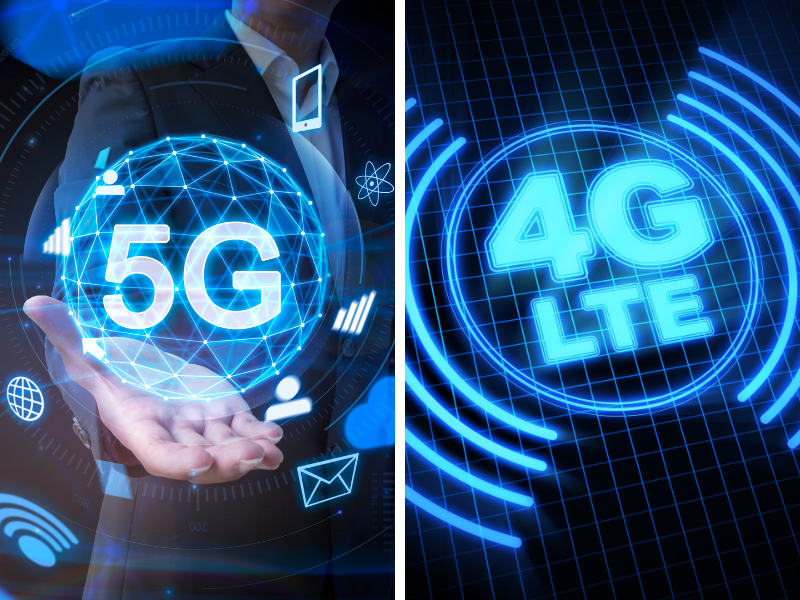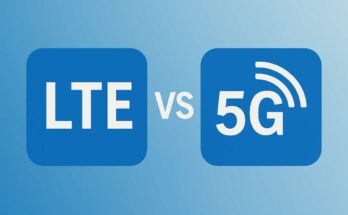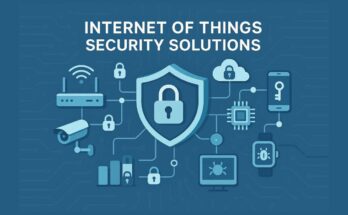The way we connect to the internet is continually evolving, and now, 5G internet is increasingly becoming a norm. If you’re listening to words like faster downloads, ultra-low latencies, and smart connectivity, there is every chance you have met the 5G hype. But, what is 5G internet? What is so different about it from everything else we currently use? In this blog, the authors will explain it per se, simplifying how 5G brings technology to a whole new level.
5G technology: A brief introduction
The term ‘5G’ indicate to the fifth generation of mobile network technology. It succeeds 1G, 2G, 3G, and 4G, and promises to deliver highly enhanced speed and responsiveness along with better network connectivity.
While 4G LTE already provides speeds that are relatively faster than before on mobile devices, 5G places the entire player in a much better league. It turns the existing mobile internet and wireless technology into a complete game-change.
Key Features of 5G Internet
5G basically revolves around the following features which are regarded as breakthroughs in wireless technology:
1. Superfast Downloading Speed
Download speeds for 5G goes up to 10 Gbps, approximately 100 times faster than 4G. This means downloading an HD movie might take a matter of seconds instead of minutes.
2. Low Latency
Latency occurs while the request goes up from the device to the network, after which the corresponding data comes back. 5G lowers this latency to anything below 1 millisecond and can thus be used for real-time applications like online gaming, video conferencing, and remote surgery.
3. Massive Connectivity
5G supports over 1 million devices per square kilometer, perfect for smart cities, IoT (Internet of Things), and connected homes when thousands of devices need to communicate simultaneously.
This level of connectivity is foundational to the Internet of Things; explore our guide on What is IoT Technology? to see how 5G and IoT work together.
4. High Availability
5G offers availability to all communication services with minimal downtime, deeply enhancing reliability in crowd areas such as stadiums, concerts, or city centers, compared with earlier problems of internet signal availability and stability.
How Does 5G Work?
5G operates on a wide variety of frequency bands: low-band, mid-band, and high-band (mmWave), which ensures that it meets various forms of data traffic demands.
- Low-band spectrum provides wide coverage but has lower speeds.
- The mid-band spectrum is usually a balance between speed and coverage.
- High-band (millimeter wave) spectrum provides super-fast speeds; however, the range is short and is easily disrupted by objects such as buildings or trees.
As a strategy to implement this, instead of using few traditional towers, 5G internet utilizes increased density of small cell towers for optimization of fast and stable signals over shorter distances.
5G vs 4G: What’s the Difference?
Here’s a quick comparison between 5G and 4G:

| Feature | 4G LTE | 5G |
| Speed | Up to 100 Mbps | Up to 10 Gbps |
| Latency | ~50 milliseconds | ~1 millisecond |
| Devices Supported | ~2,000 per sq. km | ~1 million per sq. km |
| Coverage Range | Large | Short (for high-band) |
| Energy Efficiency | Moderate | High |
5G isn’t just about speed – it’s about enabling new technologies and next-gen experiences that weren’t possible before.
The Power of 5G in Real Life
The real power of 5G is in the revolutionary changes it eventually brings to industries:
1. Smartphones and Streaming
Thanks to faster speeds and lower latency, 5G improves our mobile experience with buffer-less streaming, quicker app downloads, and online gaming without lag.
2. Smart Cities
5G aids real-time data transfer supporting smart traffic systems, connected vehicles, energy-efficient buildings, and enhanced public safety infrastructures.
3. Healthcare
Thanks to 5G’s ultra-low latency, doctors can perform remote surgeries using robotic instruments in addition to allowing a smart wearable for real-time patient monitoring.
4. Manufacturing and Industry
Automation in factories, remote control of heavy machinery, and real-time data collection are powered by 5G as part of the Industry 4.0 revolution.
5. Augmented Reality and Virtual Reality (AR/VR)
5G will pave the way for immersive AR/VR experiences in gaming, virtual tourism, remote education, and professional training.
Is 5G Available Everywhere?

The rollout of 5G networks is fast, but it is still not generally accessible. While most large cities in many countries are already covered with 5G internet services, the rural and remote areas may take time to come up.
The rolled-out 5G is dependent on carriers across the regions, and in many cases, the phone will tend to roam switching between 5G and 4G internet signals based on their strength.
New phones must now come fitted with 5G capabilities?
There is no such requirement, and most of the phones in recent times produced would support the 5G technology or at least have the option for it. Apple, Samsung, OnePlus, Xiaomi, and several such brands have gone ahead and brought 5G internet support in most of their current models.
So it goes without saying that if you were using an older phone, one that only supports 4G, in a place that has 5G coverage, you wouldn’t stand a chance to access a 5G network.
Final Thoughts: Is 5G the Future?
Yes, definitely. 5G is not just a faster internet connection; it is a very crucial groundwork for the next digital revolution. Smart homes and self-driving cars; the next generation of healthcare and hyper-responsive gaming: 5G will be their pillar and the backbone of our connected world.
As technology will go on evolving, the acceptance of 5G would present an opportunity for business professionals, developers, or even an average person to enjoy a whole new level of efficiency, productivity, and convenience.
“Let’s decode technology together. Visit TechByPrime and never miss an update!”




